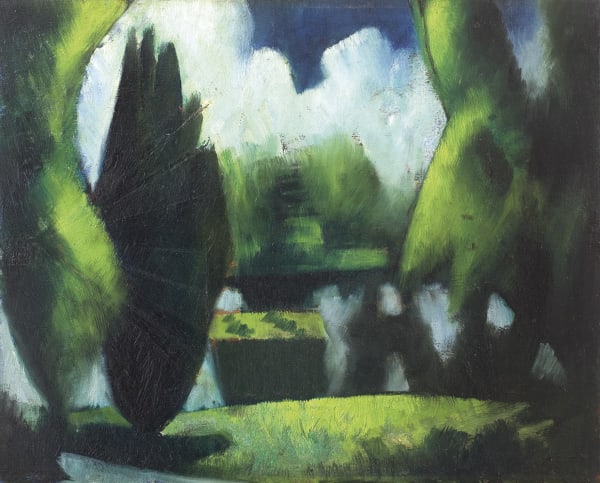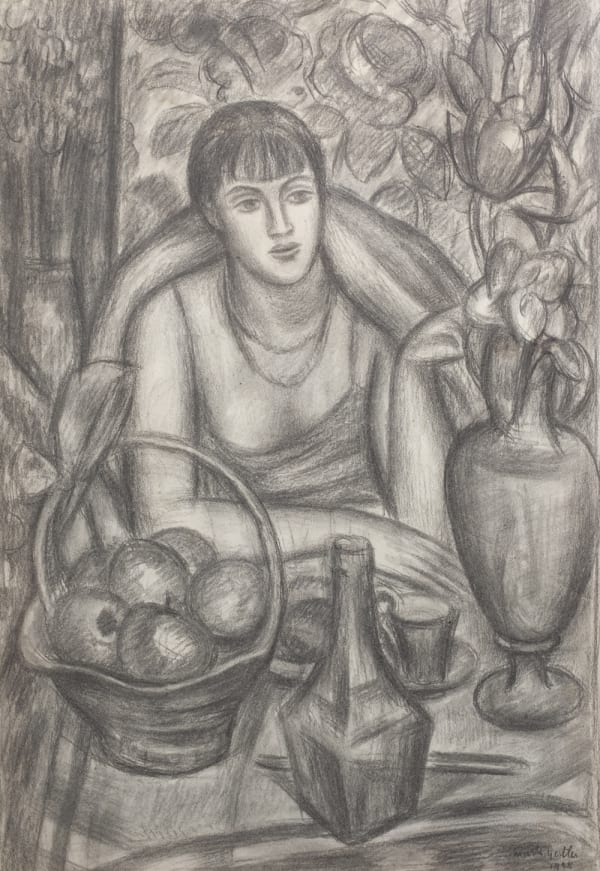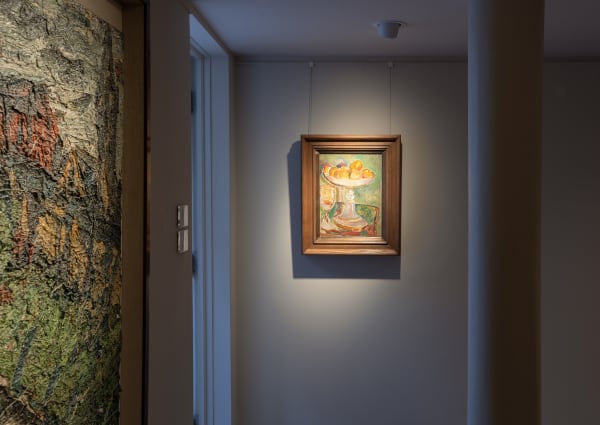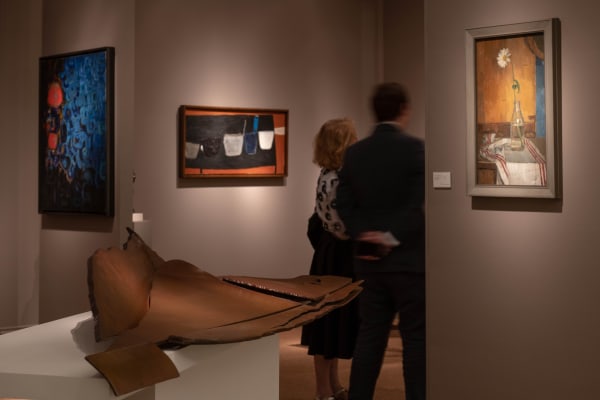Mark Gertler
The gallery regularly handles, acquires and advises on works by Mark Gertler. For more information or the availability of work, please contact the gallery.
Mark Gertler (1891–1931)
Mark Gertler was born in London in 1891 into a Jewish-Polish family. Whilst enrolled in evening classes at the Regent Street Polytechnic he was employed in a stained-glass window workshop. Funded by the Jewish Education Aid Society, he was sent to the Slade School of Art between 1908 and 1912 where he met Paul Nash, Stanley Spencer, David Bomberg, Christopher Nevinson and Dora Carrington. He gained a reputation as a particularly talented draughtsman, winning several painting prizes, a two-year Slade scholarship in 1909 and a British Institute Scholarship in 1911. He first exhibited at the Friday Club in 1911, of which Vanessa Bell was secretary, and then had a joint exhibition with John Currie at the Chenil Galleries in 1914. He was elected to the London Group in 1915 and contributed works to their November 1915 exhibition.
He painted mainly in London and later, when in poor health as a result of having contracted tuberculosis (diagnosed in 1920), near Oxford. He spent time in Banchory Sanatorium near Aberdeen where he painted Trees at Sanatorium. He had difficulty selling his work in the 1930s but had a few loyal supporters, including J.B. Priestley and Aldous Huxley, and taught part-time at Westminster College to supplement his earnings. He made frequent trips to Paris. Weighed down by the burden of financial and emotional problems he fell victim to depression during the 1930s and finally committed suicide.
Gertler's highly naturalistic early paintings focus on his family and Jewish life. He was a convinced pacifist and a conscientious objector during World War I. He painted a number of other famous pictures evoking World War I. Influenced after 1917 by Post-Impressionism, he exhibited frequently during 1920s, including annual exhibitions at Goupil Gallery from 1920s. Towards the end of his life, he painted nudes in the neo-classical manner and still-lifes of a Cubist nature.
-

20th Century Modern British Art
Developments in Modern British Art 2013Booklet, 8 pagesRead more
Publisher: Piano Nobile Publications
Dimensions: 15 x 20 cm -
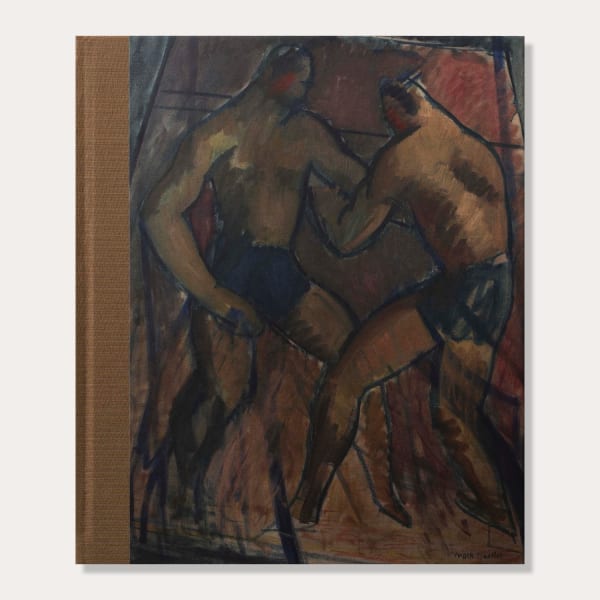
Mark Gertler: Works 1912-28
A Tremendous Show of Vitality Sarah MacDougall, 2012Hardback, 80 pagesRead more
Publisher: Piano Nobile Publications
ISBN: 978-1-901192-33-9
Dimensions: 28.4 x 24 x 1.4 cm -
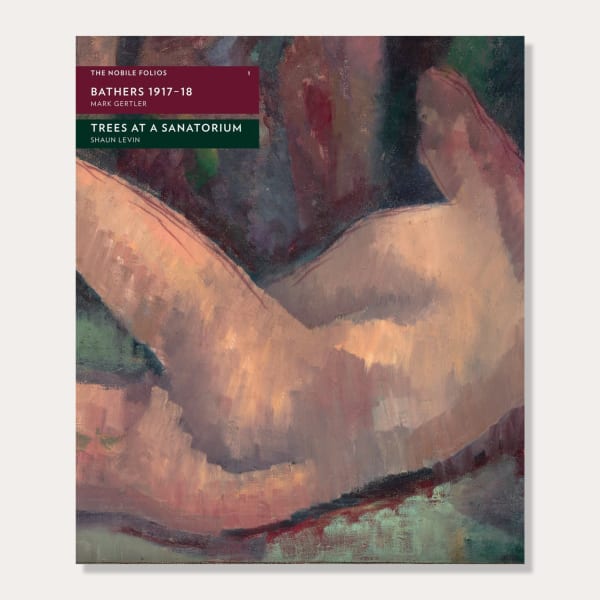
Bathers 1917-18 Mark Gertler
Set Alongside 'Trees at a Sanatorium' Robert Travers, Shaun Levin, 2010Sewn paperback, 32 pagesRead more
Dimensions: 239 x 282mm
-

Defining British Art
1910 - 2000 17 May - 23 Jul 2021 Piano NobileThis exhibition reviewed the major creative outbursts in twentieth-century Britain, with paintings, sculptures, ceramics and textiles made by four generations of pioneering artists – from Sickert at the fin de...Read more -

Masterpiece
Royal Hospital Chelsea 28 Jun - 4 Jul 2018 Art FairPiano Nobile presented a selection of Modern and Contemporary British and International artists including works by Anthony Caro, Leon Kossoff, Euan Uglow, Paul Nash, Mark Gertler, William Crozier, Craigie Aitchison...Read more -

Modern British Masters (III)
Selected Highlights 29 May - 20 Jun 2018 Piano NobileContinuing a series of exhibitions on the theme, Piano Nobile presented a display of Modern British Masters. Stretching from the birth of modern art at the beginning of the twentieth...Read more -

Masterpiece
Royal Hospital Chelsea 24 Jun - 1 Jul 2015 Art FairPiano Nobile is exhibiting at Masterpiece 2015.Read more -

20th Century British Art
Developments in Modern British Art 20 Jun - 20 Jul 2013 Piano Nobile20th Century: Modern British Art - Developments in Modern British ArtRead more
Piano Nobile Gallery
Summer show with selected works following the developments in 20th Century British Art
-

Mark Gertler: Works 1912-28
A Tremendous Show of Vitality 12 Oct - 16 Nov 2012 Piano NobileIn 2012 Piano Nobile presented the first solo show of Mark Gertler's work for a decade. We have had the pleasure of handling several important paintings by Gertler. Working with...Read more
-

Bloomsbury Now Symposium
St Peter's College Oxford November 8, 2022On Saturday 12 November, Piano Nobile’s researcher Luke Farey will be contributing a short paper to a symposium about the Bloomsbury Group held at St...Read more -

InSight No. 66
Mark Gertler | Still Life, Vase with Flowers April 21, 2021Despite perennial bouts of mental and physical ill health, Mark Gertler remained intensely focused on his work. The mid-1920s marked the height of his interest...Read more -

InSight No. 37
Mark Gertler | Still Life, Flowers September 23, 2020One of the precocious talents of his generation, Mark Gertler made advances in painting and forged connections among the Bloomsbury set – though Virginia Woolf...Read more -

Signs of a Struggle: Process, Technique, and Materials in the Early Work of Mark Gertler
British Art Studies February 28, 2020Piano Nobile has been acknowledged for path-breaking research in British Art Studies , the online journal of the Paul Mellon Centre for Studies in British...Read more -

A Crisis of Brilliance 1908-1922
Dulwich Picture Gallery October 8, 2013Between 1908 and 1922, C.R.W Nevinson, Stanley Spencer, Mark Gertler, Dora Carrington, David Bomberg and Paul Nash, studied together at the Slade School of Art...Read more -

The Spectator review Mark Gertler exhibition
Andrew Lambirth October 27, 2012 Read more





